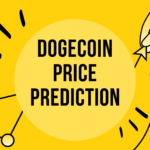Dogecoin (DOGE) has been one of the most talkedabout cryptocurrencies in recent years. Initially launched as a joke based on the popular “Doge” meme, it has since evolved into a widely recognized digital asset with a massive following. But despite its playful origins, Dogecoin’s price action has been anything but trivial. The coin has experienced dramatic surges, crashes, and everything in between, making it both a volatile and fascinating asset for traders and investors alike.
If you’re considering investing in Dogecoin or simply want to understand why its price behaves the way it does, it’s essential to have a solid grasp of what drives its price action. In this article, we’ll break down the key factors influencing Dogecoin’s price movements, the role of market sentiment, and how you can better interpret its price action.
What is Price Action?
Before diving into Dogecoin specifically, let’s briefly define price action. Price action refers to the movement of an asset’s price over time. It’s the study of past market movements and trends, and traders use it to forecast future price directions. Price action can be interpreted through charts, patterns, and indicators to predict whether an asset is likely to go up, down, or remain stable.
For Dogecoin, price action tends to be influenced by a mix of market psychology, external factors, and technical indicators. Unlike traditional stocks, Dogecoin’s price often reacts more dramatically to social media trends, celebrity endorsements, and broader market sentiment.
1. The Power of Market Sentiment and Social Media
One of the most unique aspects of Dogecoin’s price action is its close link to social media trends. The cryptocurrency’s rise in popularity was largely driven by memes, viral trends, and Elon Musk’s tweets. Dogecoin’s value is often swayed by public sentiment more than any traditional asset, making it susceptible to sudden price swings.
A. Social Media Influence
Dogecoin’s price action is deeply intertwined with social media platforms like Twitter, Reddit, and TikTok. A single tweet from influential figures—particularly Elon Musk, who is often referred to as the “Dogefather”—can cause massive price fluctuations. For example, when Musk tweets about Dogecoin, it often results in an immediate surge in price, sometimes leading to a shortterm bull run. Conversely, the lack of attention or a more neutral stance from Musk can lead to declines, further emphasizing the emotional rollercoaster that Dogecoin traders often experience.
In addition to individual influencers, the Dogecoin community on platforms like Reddit’s r/Dogecoin has proven to be a powerful force. When the community rallies behind a particular cause or trend—such as sending Dogecoin to the moon—it can lead to coordinated buying activity, which drives the price higher.
B. Memes and Viral Movements
Dogecoin’s memedriven nature means that pop culture moments can also influence its price action. When certain memes or viral events align with Dogecoin’s branding, the coin can experience a surge in popularity and, consequently, in price. However, this type of price movement is often shortlived and highly volatile, as memedriven rallies typically lack the fundamental backing that can sustain longterm growth.
2. The Role of Market Cycles
Like all cryptocurrencies, Dogecoin follows the cyclical nature of the broader crypto market. These cycles can be categorized into bull markets (when prices rise) and bear markets (when prices fall), each with distinct characteristics.
A. Bull Markets and Dogecoin’s Price Surges
In bull markets, when investor sentiment is high, Dogecoin often sees rapid price gains. The cryptocurrency’s low price relative to Bitcoin and Ethereum makes it an attractive option for retail investors looking for highrisk, highreward opportunities. During these periods, Dogecoin is frequently touted as an affordable altcoin with significant upside potential.
When the broader cryptocurrency market is rallying, Dogecoin can experience dramatic price spikes, as investors flock to the coin in hopes of profiting from the rising tide. This was evident during the 2021 Dogecoin surge, when the coin saw an astronomical increase in price—from under $0.01 to an alltime high of over $0.70.
B. Bear Markets and Price Corrections
On the flip side, during bear markets, Dogecoin often experiences sharp corrections. When the cryptocurrency market experiences a downturn—due to negative news, regulatory concerns, or economic uncertainty—Dogecoin’s price tends to follow the broader market sentiment, falling in tandem with Bitcoin and other altcoins.
While Dogecoin’s price action during a bear market can be more unpredictable than other coins, its tendency to suffer heavy losses during market corrections is a hallmark of its speculative nature. Investors looking to profit from Dogecoin’s ups and downs should be prepared for significant volatility, especially during extended periods of price declines.
3. Technical Analysis: Understanding Dogecoin’s Charts
For traders who wish to predict Dogecoin’s price movements based on historical data, technical analysis is a powerful tool. This method involves studying price charts and using various indicators and patterns to forecast future price action.
A. Support and Resistance Levels
Like most cryptocurrencies, Dogecoin’s price action can be analyzed through support and resistance levels. These levels are key price points where Dogecoin has historically experienced reversals.
Support levels are prices where Dogecoin has historically bounced back up after falling. Traders look for these levels as potential buy zones.
Resistance levels are prices where Dogecoin has struggled to move above. If Dogecoin approaches a resistance level and fails to break through, it can indicate a sell signal.
Understanding these levels can help traders predict potential entry and exit points for Dogecoin. For instance, if Dogecoin approaches a strong support level, it may signal a buy opportunity, while hitting a resistance level could signal a time to sell.
B. Moving Averages and Indicators
Moving averages, such as the 50day and 200day Simple Moving Averages (SMA), are commonly used to smooth out Dogecoin’s price action and identify trends. When the shorterterm moving average crosses above the longerterm moving average (a Golden Cross), it can signal a bullish trend, while a Death Cross (when the shortterm average crosses below the longterm average) may indicate a bearish outlook.
Other indicators like the Relative Strength Index (RSI) and Bollinger Bands can help traders gauge whether Dogecoin is overbought or oversold. An RSI above 70 suggests that Dogecoin is overbought and may be due for a correction, while an RSI below 30 indicates that it’s oversold and could be due for a price reversal.
C. Volume Analysis
Volume—the amount of Dogecoin being traded—also plays a crucial role in interpreting price action. High trading volume often accompanies significant price movements, confirming the strength of a trend. For example, a price surge on high volume is more likely to be sustainable than one with low volume, which may indicate a false breakout.
4. The Influence of Broader Market Trends
Finally, Dogecoin’s price action is strongly influenced by broader market trends and external factors like global regulations, adoption trends, and macroeconomic events. For example, when cryptocurrencies face regulatory scrutiny from governments or major exchanges, it can lead to panic selling across the market, impacting Dogecoin’s price.
Similarly, positive news, such as institutional adoption of Dogecoin or new partnerships, can drive bullish sentiment and cause Dogecoin to rise in value.
Conclusion: The Unpredictability of Dogecoin’s Price Action
Understanding Dogecoin’s price action requires a mix of technical analysis, a keen eye on social media sentiment, and an awareness of broader market conditions. Dogecoin’s unique combination of memetic appeal, celebrity influence, and market speculation makes its price movements highly volatile and often unpredictable.
For potential investors or traders, it’s crucial to stay informed, follow Dogecoin’s community, and keep an eye on price patterns and technical indicators. While Dogecoin’s price action is not always easy to predict, using a combination of strategies and tools can help you better navigate its fluctuations.
Whether you’re looking to buy and hold or trade Dogecoin, always remember that its price is subject to swift changes and can be influenced by factors beyond traditional financial markets. As with all investments, approach Dogecoin with caution and a clear strategy, and be prepared for both ups and downs in this fascinating and often unpredictable market.









